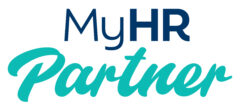Virtual phone numbers are becoming the new normal for businesses. There are options to suit businesses of every size, from start-ups to established enterprises. Here’s what you need to know about them.
Every business needs a phone number. It’s an important way of connecting with customers, suppliers and other contacts.

In recent years, many businesses have been opting to ditch conventional phone numbers in favour of virtual phone numbers. Virtual phone numbers, unlike traditional ones, aren’t tied to specific phone lines. Instead, calls going to a virtual phone number are redirected based on that number’s specific programming.
There are different types of virtual phone numbers, ranging from single-user VoIP numbers to inbound numbers, which can redirect calls from all across the country to multiple devices spread across different locations.
The variety of choices means that every business can find a virtual number to suit its needs. If you’re looking to get one, here’s what you need to know.
VoIP numbers
Voice over internet protocol (VoIP) relays audio signals through the internet, so you can make calls without relying on a landline or mobile network. It’s more flexible and costs less, while still working seamlessly with conventional phones.
Many VoIP providers offer a virtual phone number along with the service. This direct in-dial (DID) number looks like a regular number but can be answered through software on a computer, smartphone, or even certain desk phones. They don’t have strict geographic limits, which means you could get a VoIP number for your local area as easily as you could get on for a different area.
VoIP is quickly becoming the new normal because of these advantages. It’s a great choice for businesses that want a phone service, but don’t want to be tied down by the limits (and hardware) of a landline or mobile phone. With Hosted PBX, you could even have an entire business phone system hosted on the cloud.
Choosing a VoIP service
The biggest decision you’ll be making with VoIP is which service to use. Your choice of service provider will determine the call rates you’re charged, the quality of service you receive, and the functions your VoIP service can fulfil.
While there are a few ways to get a free VoIP number, remember that you get what you pay for. Free VoIP services have only the most basic functions and are generally intended for personal use rather than business use. In addition to letting you make and receive calls, business VoIP services support features such as call monitoring, voice-to-email services and call forwarding.
Inbound numbers for business
Phone numbers starting with 1300, 1800 and 13 are practically synonymous with businesses. Numbers with these prefixes are another type of virtual phone number, called inbound numbers.
Inbound numbers can only receive calls—not make them—but there’s nothing that beast them in this function. Calls to an inbound number are redirected to existing landline, mobile or VoIP numbers (called its answerpoints). You can route calls based on a wide range of options (e.g. when calls are made, where they come from, etc.), so you can handle incoming calls however works best for your business.
1300, 1800 and 13 numbers: What’s the difference?
The difference between the three types of inbound numbers is mainly in how call costs are calculated.
1300 numbers
These can be dialled from anywhere in Australia for the cost of a local call. In this way, the call costs are split between you and your callers. Calls come out cheaper than they normally would for people outside your area, which makes 1300 numbers good for reaching a wider audience.
1800 numbers
These can be dialled for free from any landline in Australia, as well as from most mobile phones (depending on the service provider). With an 1800 number, your business shoulders the full cost of each incoming call.
13 numbers
With only a total of six digits, 13 numbers are shorter and easier to remember than 1300 or 1800 numbers. Because of this, they carry an annual surcharge paid to the government. In terms of call costs, they work like 1300 numbers.
How to get an inbound number
There are two ways you can go about getting an inbound number for your business.
1) Get one from an inbound number provider
The quickest way to get an inbound number is to find a service provider you like and choose a phone number from the ones they have available. In this method, you can generally have an inbound number set up in 24 hours or less.
Search for a 1300 number (or 1800 or 13 number) and you’ll find no shortage of service providers, each with their own monthly plans boasting different call rates, call handling options and other bonus features. Rates are usually different for calls answered on a mobile phone, so look into that if you plan to route calls to your mobile.
2) Buy a smartnumber and activate it with a service provider
Smartnumbers are inbound numbers that are easier to remember because of their pattern. Some repeat digits, while others, called phonewords, spell out words when entered into the dial pad.
You can get a smartnumber directly through the ACMA website or get one through your prospective provider. Either way, you need to have a telco activate the number for you in order to use it.
When you get a smartnumber, it’s yours to use as long as you keep it active (it reverts to the government if unused for too long). This means that you can keep the same number even if you switch providers.
Virtual local numbers
1300, 1800 and 13 numbers come with certain expectations, including being able to cater to customers outside your local area. But what if you want to keep your business in the neighbourhood, so to speak?
Virtual local numbers have the functions of an inbound number but look like local landline numbers. Calls are charged based on the virtual number’s area (rather than your area) and can redirect incoming calls to any of your answerpoints.
Virtual local numbers are a great way to improve your call handling options or to establish a “local” presence in an area where you want to step up your operations.
Choosing a virtual number for your business
With the variety of choices available, any business can benefit from getting a virtual number. Larger businesses will benefit from advanced call management features. Start-ups will benefit from reduced costs—and maybe even the professional image a 1300 number provides.
As communication continues to evolve, businesses will likely see more interaction among different communication channels: voice, video, messaging and so on. Virtual phone numbers and VoIP will be the ticket to integrating your phone lines into the communication landscape of the future.



















